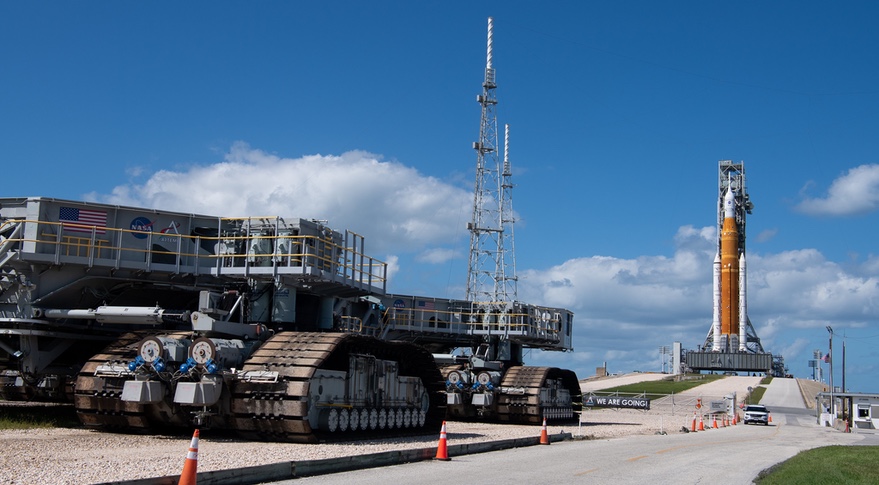
WASHINGTON — NASA will move the Space Launch System rocket from its launch pad back the Vehicle Assembly Building as a precaution for an approaching hurricane, a decision that may delay the Artemis 1 mission until November.
NASA announced Sept. 26 that mission managers decided, after days of deliberation, to move the SLS from Launch Complex 39B back to the VAB as a precaution given the approach of what is now Hurricane Ian to Florida. The storm, which officially became a hurricane earlier in the morning, is forecast to approach the west coast of the Florida peninsula by the middle of the week as a major hurricane, with some tracks taking it closer to the Kennedy Space Center on Florida’s east coast.
NASA said in a brief statement that managers made the rollback decision “based on the latest weather predictions associated with Hurricane Ian, after additional data gathered overnight did not show improving expected conditions for the Kennedy Space Center area.” Doing so, it added, would both protect the rocket and allow employees to make their own preparations for the storm.
The rollback is scheduled to begin at about 11 p.m. Eastern Sept. 26, which would have the vehicle back in the VAB by morning of Sept. 27, ahead of the storm.
NASA announced Sept. 24 it would not proceed with the next launch opportunity Sept. 27, citing the threat posed by then-Tropical Storm Ian. However, it delayed a decision on the rollback by a day to Sept. 25, then again to Sept. 26, as the storm headed north more slowly than previously forecast. NASA delayed its decision to further evaluate forecasts and determine if a rollback was necessary.
Agency officials made clear at a Sept. 23 briefing that their “Plan A” was to keep the rocket at the pad, allowing for launch opportunities Sept. 27 and Oct. 2. At that briefing, when Ian was still an unnamed tropical depression, they argued that forecasts showed winds not exceeding the peak of 74 knots (137 kilometers per hour) the vehicle was rated for at the pad.
However, they said they were also working on a “Plan B” rollback if needed, doing some preparations in parallel with those for a launch. That included, over the weekend, moving the crawler-transporter used to carry the mobile launch platform out to the pad to be in position if a rollback was needed.
Rolling the SLS lack to the pad rules out an Artemis 1 launch during the current launch period, which closes Oct. 4. The next launch period opens Oct. 17 and runs through Oct. 31, although with no launch opportunities on Oct. 24-26 and Oct. 28 because of other mission constraints.
NASA did not give a new launch date for the mission when it announced the rollback. However, launching in late October may be challenging depending on the amount of time spent in the VAB, where technicians are likely to perform work such as replacing batteries on the SLS flight termination system. Once it rolls back to the pad, the SLS would be ready for another launch attempt in about a week and a half.
If Artemis 1 does not launch in October, the next launch period is from Nov. 12 to 27.
Related
ncG1vNJzZmiroJawprrEsKpnm5%2BifLS40marqGWipLmtecGamqRlpKR6t63BZpisZZiqv7O1wpqlnmWRpb2zu8Ccn56rXZu5sL7InZho